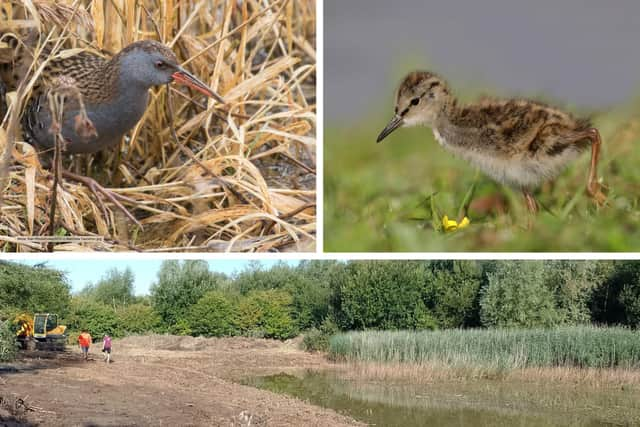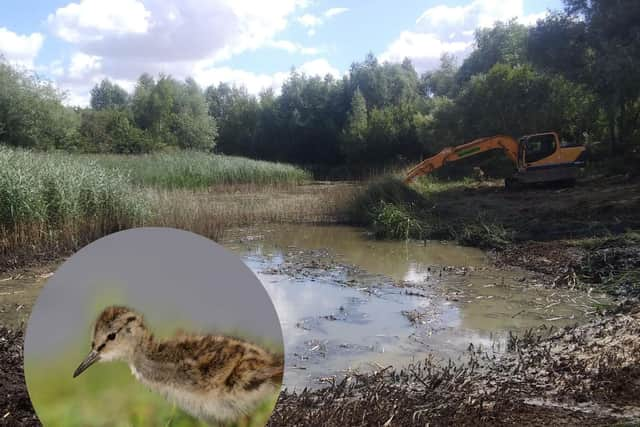Nene Valley habitat improvements continue at three Northamptonshire Wildlife Trust nature reserves
and live on Freeview channel 276
Work is ongoing at three nature reserves to improve the habitat and infrastructure for the benefit of the wildlife living there.
The Wildlife Trust in Northamptonshire is delivering a four-year wetland restoration scheme in the Nene Valley funded by National Highways.
Advertisement
Hide AdAdvertisement
Hide AdIt is currently in its third year of operation, with habitat and infrastructure works of improvement taking place at three nature reserves for the benefit of wildlife, helping boost numbers of declining wetland bird species.


Work so far has restored ponds, lake edges and meadows, implemented artificial sand martin banks and a new cattle bridge along the way.
This year will focus predominantly on islands, as well as further lake edges and reedbeds, improving habitat for the overwintering and breeding bird populations that depend upon these sites.
Timing is key so work is taking place from August into September, starting after bird breeding season but before overwintering birds return, minimising disturbance to wildlife while maximising dry ground conditions for things to run smoothly.
Advertisement
Hide AdAdvertisement
Hide AdMuch of the work will involve large, noisy diggers, leaving some areas muddy and misshapen, although the trust says conservation can often be a messy business.


Over time the trust says these areas will respond positively to the disturbance and wildlife will greatly benefit as a result.
At Nene Wetlands, which can be accessed via Rushden Lakes and is made up of four nature reserves including Ditchford Lakes and Irthlingborough Lakes and Meadows, the overwintering and breeding wetland bird species favour a low-gradient, shallow and muddy water’s edge for feeding, nesting and breeding opportunities.
The edge of a lake and an island will be reprofiled to create these conditions, resulting in larger surface areas of available muddy habitat for target species of wading birds, including oystercatcher and redshank.
Advertisement
Hide AdAdvertisement
Hide AdPrevious work was achieved via the same method on the northern lake edge and is now frequently inundated with wading birds using the habitat effectively, in comparison to the planned work areas which currently are not used to the same degree.
Over at Summer Leys near Wollaston, a purpose-designed wading bird wetland feature called a scrape comprises of a deep trench on the western side, with areas of mud, undulating ridges and mounds which appear during lower water levels in spring, gradually exposing more muddy edges for wading birds to feed, nest and breed on.
Annual plants establish across much of the mud throughout spring and summer covering the muddy patches, hindering habitat quality for wetland bird, including invasive non-native species New Zealand pigmy weed Crassula helmsii.
Areas will be scraped back with new mounds formed at a greater height than present features, helping a boost in the populations of wetland birds, including lapwing, redshank and oystercatcher.
Advertisement
Hide AdAdvertisement
Hide AdTitchmarsh nature reserve provides a mosaic of wetland habitats with several areas of reed cover.
The reeds have now choked channels and reduced water supplies.
Improvements will remove encroaching reed and scrub from channels and open up reedbeds, improving habitats for a variety of invertebrate and bird
species.
Two islands here will also be reprofiled creating smooth, sloping, shallow gradients leading into the water’s edge.
Find out more about the project here.